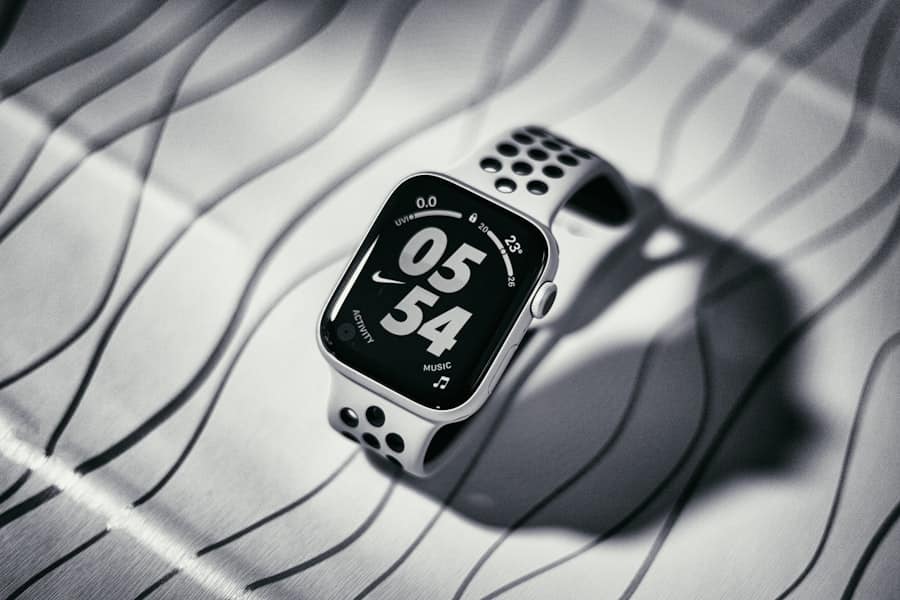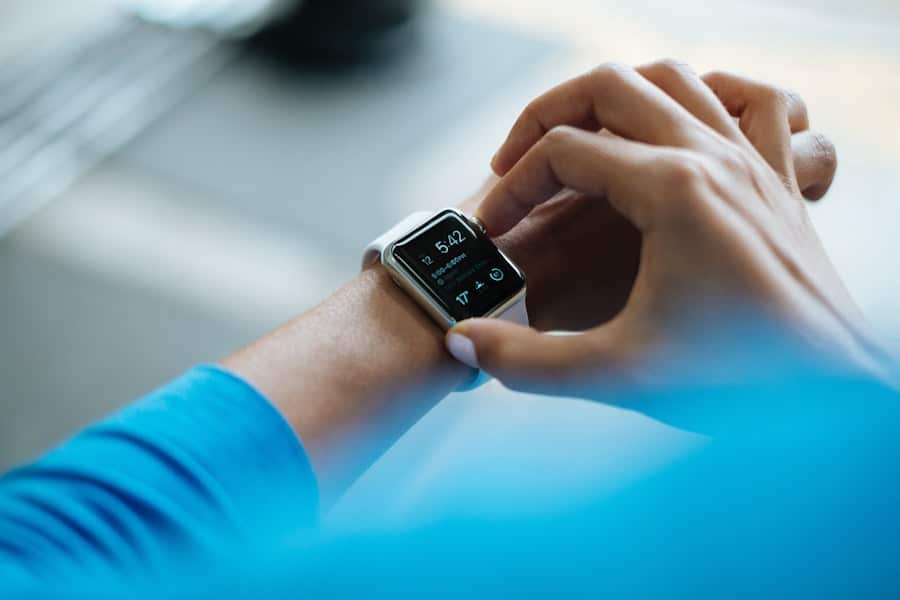The advent of wearable technology has revolutionized the way individuals monitor their health and wellness. These devices, which include smartwatches, fitness trackers, and health monitors, have become increasingly sophisticated, offering a range of functionalities that extend beyond mere fitness tracking. In the context of infectious diseases, wearables present a unique opportunity to enhance public health surveillance and individual health management.
As the world grapples with the ongoing threat of infectious diseases, particularly in light of recent global pandemics, the integration of wearable technology into health monitoring systems has emerged as a critical area of exploration. Wearable devices are equipped with sensors that can track various physiological parameters such as heart rate, body temperature, and respiratory rate. This data can be invaluable in identifying potential health issues before they escalate into more serious conditions.
The ability to continuously monitor these parameters allows for a proactive approach to health management, particularly in the early detection of infectious diseases. As researchers and healthcare professionals increasingly recognize the potential of wearables, there is a growing interest in how these technologies can be leveraged to improve health outcomes and enhance disease prevention strategies.
Key Takeaways
- Wearable devices play a crucial role in continuously monitoring health parameters relevant to infectious diseases.
- Early warning signs such as changes in temperature, heart rate, and respiratory patterns can be detected by wearables.
- Real-time data collection from wearables enables timely identification and response to potential infections.
- Wearable technology enhances contact tracing efforts, helping to control the spread of infectious diseases.
- Despite challenges like data accuracy and privacy concerns, future innovations promise improved early detection and prevention capabilities.
The Role of Wearables in Monitoring Health Parameters
Wearable technology plays a pivotal role in the continuous monitoring of health parameters, providing users with real-time insights into their physiological status. Devices such as smartwatches and fitness trackers are equipped with advanced sensors that can measure heart rate variability, skin temperature, and even blood oxygen levels. This data is not only useful for fitness enthusiasts but also for individuals who may be at risk for infectious diseases.
For instance, an elevated heart rate or an unusual change in body temperature can serve as early indicators of an underlying infection.
These algorithms can identify patterns and anomalies that may indicate the onset of an infectious disease.
For example, a sudden spike in body temperature combined with increased heart rate could trigger alerts for users to seek medical attention. This capability transforms wearables from simple fitness trackers into powerful health monitoring tools that can provide critical information about an individual’s health status.
Early Warning Signs of Infectious Diseases Detected by Wearables

Wearable devices have the potential to detect early warning signs of infectious diseases through their ability to monitor various health metrics continuously. For instance, changes in body temperature are often one of the first indicators of an infection. Many wearables now include temperature sensors that can track fluctuations in real-time, allowing users to identify potential fevers before they become symptomatic.
This early detection is crucial, especially in the context of contagious diseases where timely intervention can significantly reduce transmission rates. In addition to temperature monitoring, wearables can also track other vital signs such as respiratory rate and heart rate variability. An increase in respiratory rate may indicate respiratory infections, while changes in heart rate variability can signal stress or illness.
By analyzing these metrics collectively, wearables can provide users with a comprehensive view of their health status and alert them to potential infections. For example, during the COVID-19 pandemic, some studies demonstrated that wearables could detect changes in physiological parameters associated with the virus, enabling users to take precautionary measures before experiencing severe symptoms.
The Importance of Real-time Data Collection for Early Detection
Real-time data collection is a cornerstone of effective health monitoring and early detection of infectious diseases. Wearable devices facilitate this by continuously gathering data on various health parameters without requiring active user input. This constant stream of information allows for immediate analysis and response to any concerning changes in an individual’s health status.
The immediacy of real-time data collection is particularly important in the context of infectious diseases, where rapid identification and response can mitigate outbreaks. Furthermore, real-time data collection enables healthcare providers to monitor patients remotely, reducing the need for in-person visits and minimizing exposure risks during infectious disease outbreaks. Telehealth services can leverage data from wearables to assess patient conditions more accurately and make informed decisions about treatment plans.
For instance, if a patient’s wearable device indicates a significant increase in body temperature or respiratory distress, healthcare providers can prioritize their case and provide timely interventions. This shift towards remote monitoring not only enhances patient care but also contributes to broader public health efforts by allowing for more efficient resource allocation during crises.
Wearable Technology and Contact Tracing for Infectious Diseases
In addition to monitoring health parameters, wearable technology has emerged as a valuable tool for contact tracing during infectious disease outbreaks. Traditional contact tracing methods often rely on manual interviews and memory recall, which can be time-consuming and prone to errors. Wearable devices equipped with Bluetooth technology can automatically log interactions between users, creating a digital record of close contacts that can be invaluable during an outbreak.
For example, during the COVID-19 pandemic, several countries implemented contact tracing applications that utilized data from smartphones and wearables to track potential exposure to the virus. These applications could alert users if they had been in close proximity to someone who tested positive for COVID-19, enabling them to take necessary precautions such as self-isolation or testing. The integration of wearables into contact tracing efforts not only enhances the accuracy of exposure notifications but also empowers individuals to take proactive steps in protecting their health and the health of others.
Moreover, the use of wearables for contact tracing raises important considerations regarding privacy and data security. As these devices collect sensitive health information, it is crucial for developers and public health officials to establish robust protocols that protect user data while still facilitating effective disease surveillance. Striking a balance between privacy concerns and public health needs will be essential as wearable technology continues to play a role in managing infectious diseases.
Challenges and Limitations of Wearables in Early Detection

Despite the promising potential of wearable technology in detecting infectious diseases early, several challenges and limitations must be addressed. One significant concern is the accuracy and reliability of the data collected by these devices. While many wearables are designed with advanced sensors, variations in individual physiology can lead to discrepancies in readings.
For instance, factors such as skin type, hydration levels, and even environmental conditions can affect temperature measurements. Ensuring that wearables provide consistent and accurate data across diverse populations is essential for their effectiveness in early detection. Another challenge lies in user compliance and engagement with wearable technology.
For wearables to be effective tools for monitoring health parameters, users must consistently wear them and actively engage with the data they provide. However, studies have shown that many individuals abandon their wearables after a short period due to discomfort or lack of perceived value. To maximize the impact of wearable technology on infectious disease detection, manufacturers must focus on improving user experience and demonstrating the tangible benefits of continuous health monitoring.
Future Prospects and Innovations in Wearable Technology for Infectious Disease Detection
The future of wearable technology holds immense promise for enhancing the early detection and management of infectious diseases. As advancements in sensor technology continue to evolve, we can expect wearables to become even more sophisticated in their ability to monitor a wider range of health parameters. Innovations such as non-invasive blood glucose monitoring or advanced biosensors capable of detecting specific pathogens could significantly expand the capabilities of wearable devices.
Machine learning algorithms could be developed to identify subtle patterns indicative of emerging infections based on historical data from large populations. This predictive capability could enable healthcare providers to intervene earlier than ever before, potentially preventing outbreaks before they escalate.
Collaboration between technology companies, healthcare providers, and public health organizations will be crucial in driving these innovations forward. By working together to develop standardized protocols for data sharing and analysis, stakeholders can create a comprehensive ecosystem that leverages wearable technology for improved infectious disease surveillance and response.
The Impact of Wearables on Early Detection and Prevention of Infectious Diseases
The integration of wearable technology into health monitoring systems represents a significant advancement in our ability to detect and respond to infectious diseases early. By continuously tracking vital health parameters and facilitating real-time data collection, wearables empower individuals to take charge of their health while providing healthcare providers with valuable insights into population health trends. As we continue to navigate the challenges posed by infectious diseases, harnessing the potential of wearable technology will be essential for enhancing public health outcomes and preventing future outbreaks.
The ongoing evolution of this technology promises not only improved individual health management but also a more robust public health infrastructure capable of responding effectively to emerging threats.
Wearable technology has become increasingly vital in the early detection of infectious diseases, leveraging real-time data to monitor health metrics. For a deeper understanding of how advanced devices can enhance our daily lives, you might find the article on the Samsung Galaxy S21 particularly interesting. It discusses the features of this smartphone that complement wearable technology, making it easier to track health data effectively. You can read more about it here:


